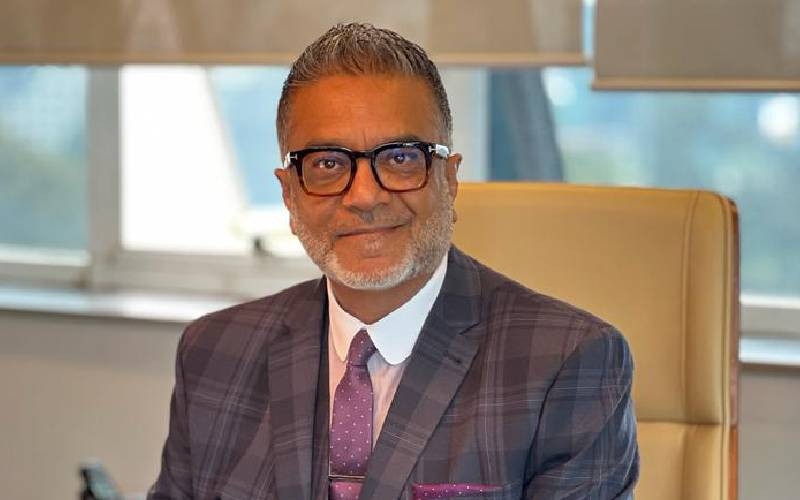The Adolescent HIV Prevention Campaign is much more than distributing condoms to kids
About two years ago I participated in a national stakeholders’ workshop reviewing a school-based HIV prevention curriculum. Religious leaders, teachers, officials from ministries of education and health, and representatives of NGOs, were charged with the responsibility of tailoring the curriculum content to suit the Kenyan “values and morals”—a very challenging task in deed. I was quite saddened at the time by the resistance from stakeholders against any mention of the word condom, or anything considered vulgar such as defining sexual intercourse as the “insertion of a man’s penis into a woman’s vagina.” Stakeholders put to task those of us who had drafted the curriculum to explain why we wanted to corrupt the innocent minds of Kenyan children, with foreign American concepts. I was saddened but not surprised by these sentiments. I had gone through the same experience trying to introduce life skills sessions to schools in Nyanza Province back in 2005.
Fast forward to 2015. The Kenya government, headed by his Excellency President Uhuru Kenyatta, has launched “All In”, a global campaign seeking to engage stakeholders to consolidate efforts towards enhancing prevention of HIV among adolescents. At the launch, presenters used numbers indicating infection rates among adolescents as justification for the campaign. The disproportionate effect of HIV among Kenyan youth is no longer in question. That alone is a huge step in the right direction. Adolescent sexuality education has been marked with controversies, significantly hindering HIV, STI and teen pregnancy prevention in the country. Controversies surround what is “morally right” for adolescents, and fears about encouraging sexual activity. Beyond the content of sexuality education, there are also unresolved issues around who should teach adolescents about sexuality, and how to deliver sexual and reproductive health services to adolescents? Anyone who has taken a minute to talk to adolescents would know that schoolteachers and health care workers need a lot of training and attitude change before they can become acceptable sources of sexuality information. Parents on the other hand are either too busy, less informed than the adolescents themselves, too afraid and uncomfortable to talk about sexuality, or just living in the assumption that someone else will teach their child. Legal and structural barriers make it difficult for adolescents to access vital sexual and reproductive health services, which would guarantee their protection from HIV, STIs and unintended pregnancy, but which would also diagnose and manage when they have a sexually transmitted infection.
Despite these barriers to sexuality services and information for adolescents, regulatory weaknesses in almost all our public sectors make booming business for contraband services and misleading information for our children. On their hands, they have the morning after pill, available for as little as KSH. 100 or half the price of durex condoms; the ultimate preference for young people. In their ears are all these sexually explicit lyrics from river road music, and with their eyes they see YouTube videos full sex and orgy parties from Machakos. Everyone who should not be teaching adolescents about sex is doing so while everyone who should not is avoiding the topic. It is because of this context that all Kenyans who mean well for adolescents must laud the “All In” campaign. HIV prevention and sexuality education stakeholders must take advantage of the opportunity created by this campaign to engage ministry officials and religious leaders with a view to expanding the content of sexuality education, and reforming the delivery of sexual and reproductive health services. Let us not kill this opportunity the Kenyan style by labeling it a call to “distribute condoms to kids” as some are already misreporting.
Beyond providing condoms, the president made a clear call to policy makers and ministry administrators to address the question about HIV treatment for adolescents. An estimated 140,000 adolescents are living with HIV. Many of these adolescents do not know their status. For a few, it is their caregivers, often old caregiver grannys in the village, who are informed about the child’s status. The beginning therefore has to be in discussions about how to accelerate HIV testing for school kids. How we maintain confidentiality and other important ethical standards while making it easy to get school children tested for HIV, and without opening windows for abuse? Perhaps accelerated home-testing is a good strategy for achieving this goal. Secondly, all children and adolescents testing HIV positive must go through child-friendly disclosure. There is need to review what is included in assisted disclosure of this nature, to ensure caregivers and infected children are receiving adequate information about living positively, in an age-appropriate and simplified format. Without adequate information and continued support, caregivers are bound to fail the rigorous test of adherence to HIV treatment. I have interacted with many elderly and uneducated grandparents who have the responsibility of taking their pre-teen grandchildren to the clinic every month for HIV treatment. How difficult must it be for them to keep up? It is time to explore other options. More questions must be asked, more innovative strategies sought, and greater flexibility sought if we are to truly address adolescent HIV in Kenya. President Kenyatta has shown the way.
 The Standard Group Plc is a
multi-media organization with investments in media platforms spanning newspaper
print operations, television, radio broadcasting, digital and online services. The
Standard Group is recognized as a leading multi-media house in Kenya with a key
influence in matters of national and international interest.
The Standard Group Plc is a
multi-media organization with investments in media platforms spanning newspaper
print operations, television, radio broadcasting, digital and online services. The
Standard Group is recognized as a leading multi-media house in Kenya with a key
influence in matters of national and international interest.
 The Standard Group Plc is a
multi-media organization with investments in media platforms spanning newspaper
print operations, television, radio broadcasting, digital and online services. The
Standard Group is recognized as a leading multi-media house in Kenya with a key
influence in matters of national and international interest.
The Standard Group Plc is a
multi-media organization with investments in media platforms spanning newspaper
print operations, television, radio broadcasting, digital and online services. The
Standard Group is recognized as a leading multi-media house in Kenya with a key
influence in matters of national and international interest.









